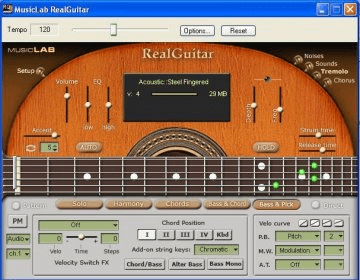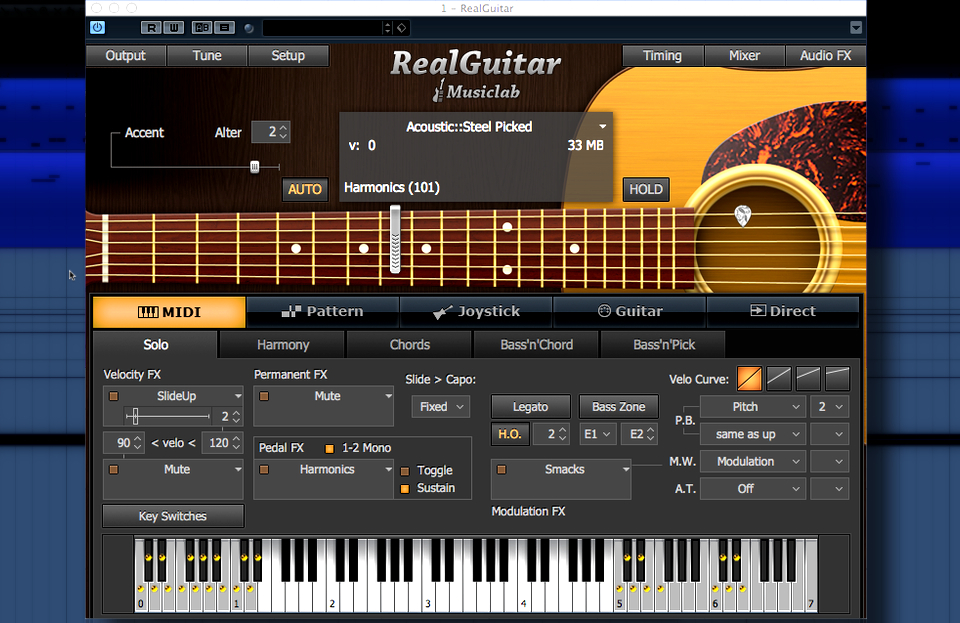
Let me know if you have any specific issues. There are also some great demos on YouTube, including an amazing "guitar hero" who can play that thing live better than many gigging guitarists in hotel bars!

Perhaps I'll post one of my first solo nylon works later for your listening. I find just playing works well, and clean and tweak after. I know RG has other playing and programming modes, and strumming templates, and a new strumming instrument I think, which I'm sure are great for others. If you don't do this, RG seems to remember it was bar chording before, and starts off straight away with bar chords almost regardless of what the first chord is (this is surely a bug). This re-sets RG to the first position again. If I like the auto-capo positioning it does (actually, it's more like bar chording, because it moves around based on each chord), I will leave it turned on, but add one note (the lowest open string E note) at the beginning of the piece, out of the way of the music so I can trim it out of the soundfile later. by playing live, and add or edit the music afterwards.īy the way, I usually de-select the auto-position button (which acts like an auto capo) if I want to keep an open first-position sound (RG capos up pretty tightly, and I have not found the way to program or control that). I have also found using the strum keys when playing live is effective and fun! In fact, just playing the muted strum keys is a blast! You can get a great rhythm pattern going, great for the intro into a piece.īasically, just play live for a while until you feel comfortable, and then simply record what you can. But the note slide does not always sound real, sometimes you can detect that false bending note effect. These two functions are the most useful to me for this instrument.

You can also add assignable function keys, such as note slides, and harmonics. Then I go through and fine tune timing, grace notes, etc. Personally, I find RG plays "hard" so you want to soften the attack on most notes (no guitarist hammers out every single note with max force, and that is a sure give-away of a midi guitar performance!). The sharp keys next to the strum keys are preset as the "muted strum" keys, which is also great for flamenco!Īfter I play the piece in by hand, I then spend a good deal of time editing every note in a midi editor. just hold a chord and play the strum keys and listen for which is which). (That is really important, I don't remember which is which, and always confirm when I use it. I think the low and hi C and D notes are the strum keys.

I play most "first stums" live (piano style), and then I'll add strumming keys later for any chord I need (those strumming "repeater" keys sound amazing), and I'll usually remember to hold down those notes I intend to strum later, adding the strum key notes in the editor (they will re-strum all last notes played or currently active). But first, I'll just play the piece in by hand (because a live feel is paramount for realism).

The preset function keys which are above and below the playable range are important (they are preset as "strum" and "muted string strum"). I use whatever the function is that it opens with (maybe it's called "solo and strum", or whatever), then load the nylon, and start playing it. Personally, I don't go that deep into RealGuitar (RG). I actually find the nylon finger-picked instrument to be the most amazing, and worth the cost of the entire program alone!


 0 kommentar(er)
0 kommentar(er)
